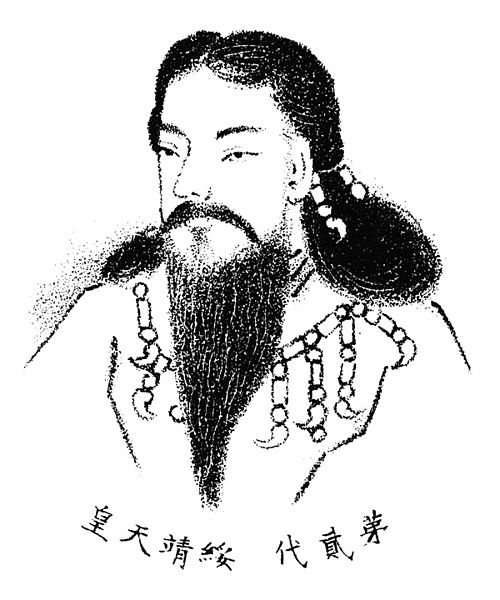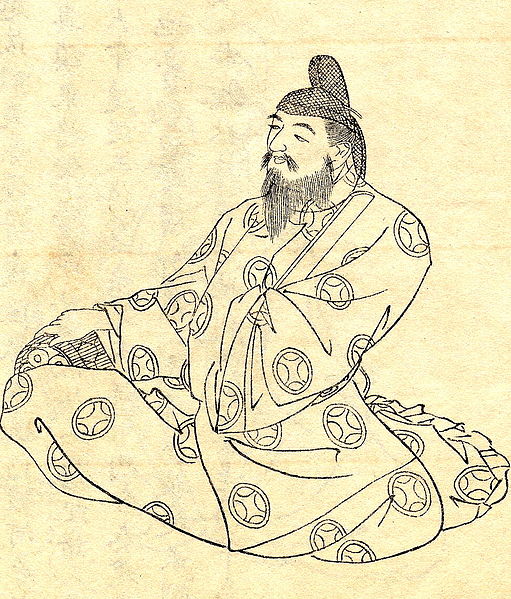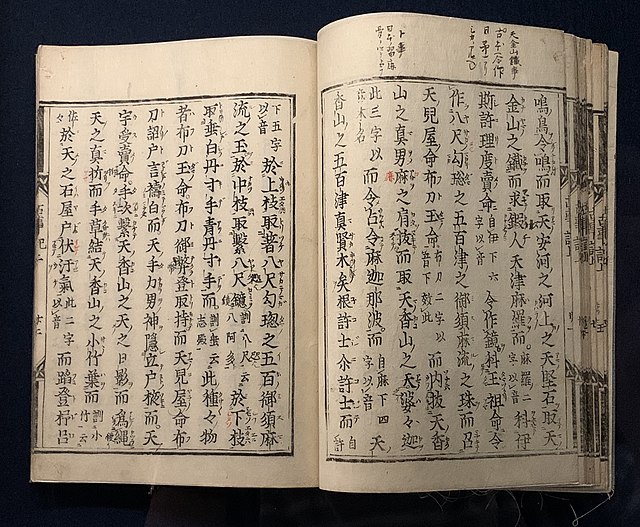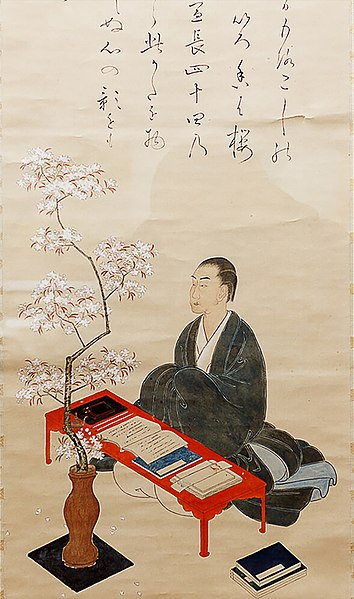Emperor Suizei , also known as Kamununakawamimi no Mikoto (神沼河耳命), was the second legendary emperor of Japan according to the traditional order of succession. Very little is known about this Emperor due to a lack of material available for further verification and study. Suizei is known as a "legendary emperor" among historians as his actual existence is disputed. A legendary account from the Kojiki states that Suizei became emperor after receiving the title of crown prince by his half brother due to his bravery regarding a murder plot. Suizei's reign started in 581 BC, he had one wife and a sole son who supposedly became the next emperor upon his death in 549 BC.
Picture of Suizei
Picture of haisho(配所) of the tomb(Misasagi) of Suizei in Kashihara, Nara.
The Kojiki , also sometimes read as Furukotofumi or Furukotobumi, is an early Japanese chronicle of myths, legends, hymns, genealogies, oral traditions, and semi-historical accounts down to 641 concerning the origin of the Japanese archipelago, the kami (神), and the Japanese imperial line. It is claimed in its preface to have been composed by Ō no Yasumaro at the request of Empress Genmei in the early 8th century (711–712), and thus is usually considered to be the oldest extant literary work in Japan.
Portrait of Ō no Yasumaro by Kikuchi Yōsai (19th century)
Kan'ei Kojiki, 1644 (Kokugakuin University)
Kojiki-den by Motoori Norinaga
Motoori Norinaga






